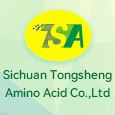Products Categories
| CAS No.: | 149-87-1 |
|---|---|
| Name: | DL-Pyroglutamic acid |
| Article Data: | 75 |
| Molecular Structure: | |
|
|
|
| Formula: | C5H7NO3 |
| Molecular Weight: | 129.115 |
| Synonyms: | Proline, 5-oxo-, DL- (8CI);5-Oxo-DL-proline;DL-2-Pyrrolidinone-5-carboxylic acid;DL-2-Pyrrolidone-5-carboxylic acid;DL-Pyroglutamate;DL-Pyrrolidonecarboxylic acid;NSC 40887;DL-Proline,5-oxo-; |
| EINECS: | 205-748-3 |
| Density: | 1.38 g/cm3 |
| Melting Point: | 183-185 °C(lit.) |
| Boiling Point: | 453.1 °C at 760 mmHg |
| Flash Point: | 227.8 °C |
| Solubility: | water5.67 g/100 mL (20 °C) |
| Appearance: | white crystalline powder |
| Hazard Symbols: |
 Xn, Xn, Xi Xi
|
| Risk Codes: | 22-36/37/38 |
| Safety: | 26-37/39 |
| PSA: | 66.40000 |
| LogP: | -0.32160 |
- 483366-12-7(2S,4R)-1-Boc-2-cyano-4-hydroxypyrrolidine
- 173606-50-3BOC-10-AMINODECANOIC ACID
- 361456-36-2METHYL (R)-(+)-ISOCYANATO-3-PHENYLPROPI&
- 5156-58-1N-(1-Benzyl-4-pipperidinyl)-N-phenylpropanamide HCl
- 81281-59-67-Benzylideneaminotheophylline
- 50288-62-5threo-Phenyl-2-piperidyl acetamide
- 82993-81-5D-threo-Ritalinic acid hydrochloride
- 47087-37-6Z-D-Glu-OMe
- 73441-42-6METHYL-5-CHLORO-2,2-DIMETHYLVALERATE
- 211914-50-0N-[[2-[[[4-(Aminoiminomethyl)phenyl]amino]methyl]-1-methyl-1H-benzimidazol-5-yl]carbonyl]-N-(2-pyridinyl)-beta-alanine ethyl ester hydrochloride
Specification
The DL-Pyroglutamic acid is an organic compound with the formula C5H7NO3. The IUPAC name of this chemical is 5-oxopyrrolidine-2-carboxylic acid. With the CAS registry number 149-87-1, it is also named as Glutamic Acid Lactam. The product's categories are Heterocycles; Pyrrole & Pyrrolidine & Pyrroline; Organic Acids; Pyroglutamic Acid [Pyr, pGu]; Amino Acids; Biochemistry; Biological-modified Amino Acids; Amino Acids. Besides, it is a white crystalline powder, which should be stored in a closed cool and dry place. It is mainly used for biochemical studies.
Physical properties about DL-Pyroglutamic acid are: (1)ACD/LogP: -2.39; (2)ACD/LogD (pH 5.5): -4.43; (3)ACD/LogD (pH 7.4): -5.92; (4)ACD/BCF (pH 5.5): 1; (5)ACD/BCF (pH 7.4): 1; (6)ACD/KOC (pH 5.5): 1; (7)ACD/KOC (pH 7.4): 1; (8)#H bond acceptors: 4; (9)#H bond donors: 2; (10)#Freely Rotating Bonds: 1; (11)Polar Surface Area: 46.61Å2; (12)Index of Refraction: 1.511; (13)Molar Refractivity: 28.03 cm3; (14)Molar Volume: 93.4 cm3; (15)Polarizability: 11.11×10-24cm3; (16)Surface Tension: 54.6 dyne/cm; (17)Density: 1.38 g/cm3; (18)Flash Point: 227.8 °C; (19)Enthalpy of Vaporization: 78.09 kJ/mol; (20)Boiling Point: 453.1 °C at 760 mmHg; (21)Vapour Pressure: 1.79E-09 mmHg at 25°C.
Preparation: this chemical can be prepared by L-glutamic acid. This reaction will need reagent nitrobenzene. The reaction time is 4 hours with reaction temperature of 160 °C.
.gif)
Uses of DL-Pyroglutamic acid: it can be used to produce 5-thioxo-L-proline at ambient temperature. It will need reagent Lawesson's reagent and solvent 1,2-dimethoxy-ethane with reaction time of 2.5 hours. The yield is about 63%.
.gif)
When you are using this chemical, please be cautious about it as the following:
It is harmful if swallowed. In case of contact with eyes, rinse immediately with plenty of water and seek medical advice. Besides, this chemical is irritating to eyes, respiratory system and skin. When you are using it, wear suitable gloves and eye/face protection.
You can still convert the following datas into molecular structure:
(1)InChI: InChI=1/C5H7NO3/c7-4-2-1-3(6-4)5(8)9/h3H,1-2H2,(H,6,7)(H,8,9)/t3-/m0/s1
(2)InChIKey: ODHCTXKNWHHXJC-VKHMYHEABY
(3)Std. InChI: InChI=1S/C5H7NO3/c7-4-2-1-3(6-4)5(8)9/h3H,1-2H2,(H,6,7)(H,8,9)/t3-/m0/s1
(4)Std. InChIKey: ODHCTXKNWHHXJC-VKHMYHEASA-N
-
Premium Related Products


